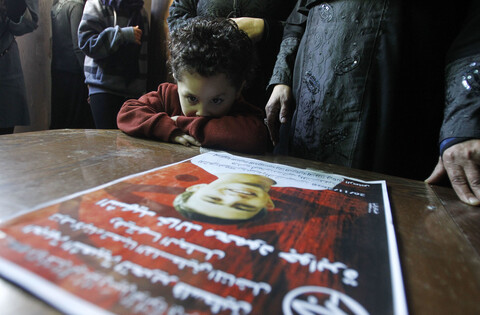The Electronic Intifada 5 January 2016

The daughter of Mahdia Hammad, shot dead by Israeli Border Police the day before, mourns during her mother’s funeral in the West Bank village of Silwad on 26 December. The police riddled the body of the 40-year-old mother of four with 17 bullets, claiming she had attempted to attack them with her car. But her husband said Hammad was rushing home to feed their baby when she was slain.
APA imagesThe month of December closed out a year in which the West Bank traded places with the Gaza Strip as the primary arena of deadly confrontation between Palestinians and the Israeli occupation army.
Dozens of Palestinians were killed this month, mostly in the West Bank, during an ongoing wave of violence that began in October, provoked by Israel’s unchecked assaults and incursions in occupied East Jerusalem’s al-Aqsa mosque compound.
As noted by the United Nations monitoring group OCHA, the epicenter of that violence soon moved to Hebron, another West Bank city where Israel expands its settlements in the heart of Palestinian neighborhoods. Confrontations have since spread throughout the West Bank where for decades Israel has imposed a belligerent military occupation to expand its settler-colonial enterprise.
More than 140 Palestinians in the West Bank and Gaza were slain by Israeli settlers and soldiers in the past three months, including 29 children. At least 20 Israelis were killed by Palestinians or by unintentional police fire during attacks in that same period.
A US citizen volunteering in an Israeli settlement was also slain by a Palestinian attacker, as was an Eritrean refugee who was shot and beaten by an Israeli mob after the fatal shooting of a soldier at a bus station. The refugee was an innocent bystander and his assault, like many of the incidents in which Palestinians were killed, was recorded on video.
“Shoot to kill policy”
More than half of the Palestinians killed since October were shot dead by police and soldiers during what Israel says were attacks or attempted stabbing and car ramming attacks on its forces and civilians.
But investigations have found that Israeli forces are using lethal force when alleged Palestinian attackers do not pose an immediate threat, as part of what human rights groups have previously called a “shoot to kill policy” used as a matter of first resort. In some cases, Palestinians were slain when there was no attack attempt, despite police and army claims.
The bodies of at least 80 Palestinians slain during alleged attacks, including several children, have been withheld from their families. Israel began transferring many of them at the end of December, imposing restrictions on their burial. Israel’s treatment of the bodies effectively makes it impossible for Palestinians to properly examine them.
Dozens of Palestinians have also been killed after soldiers and police opened fire on protesters.
At least 170 Palestinians were slain by Israeli settlers and soldiers in all of 2015, and 26 Israelis were killed during the same period, the United Nations monitoring group OCHA stated.
The vast majority of Palestinians killed were in the West Bank. More than 135 were slain in that region during 2015 — nearly three times the number killed there in 2014.
At least 15,000 Palestinians were injured during the year, mostly in the West Bank, including East Jerusalem, compared to the 16,626 injured during the previous year, most of them wounded during Israel’s 51 days of bombing on the Gaza Strip in July and August.
Political prisoners
The number of political prisoners in Israeli custody dramatically spiked in the last three months as more than 2,660 Palestinians have been arrested since the beginning of October, including nearly 500 children, with the total number of Palestinian prisoners swelling to approximately 6,800.
According to Addameer, this includes 660 Palestinians held without charge or trial under administrative detention orders, double the number before October.
In 2015, Israeli forces also demolished or dismantled more than 500 Palestinian-owned structures in the West Bank, displacing nearly 750 Palestinians, according to OCHA. Most were destroyed under the pretext that they lacked building permits, which Israel routinely denies to Palestinians. Another 19 homes belonged to families of Palestinians accused of attacks against Israelis or their neighbors, and which were punitively destroyed.
The siege on Gaza remained as severe as ever in the past year as Israel and Egypt restricted the movement of people and goods via the territory’s three crossing points.
Egypt kept the Rafah crossing shut, partially opening it only 39 days since October 2014, preventing Palestinians from leaving and entering the Strip.
Israel continues to severely restrict Gaza exports, with an average of only 45 trucks per week leaving the territory, compared with the pre-blockade rate in early 2007 of 240 trucks per week.
Israel additionally conducted 56 military incursions into Gaza in 2015 and in December it sprayed herbicide on agricultural areas inside the Strip.
According to UNRWA, the UN agency for Palestine refugees, as of November, 9,117 homes in Gaza were totally demolished, a similar number suffered severe or major damage and another 123,000 suffered minor damage as a result of Israel’s summer 2014 assault.
The agency has only been able to help one refugee family rebuild their totally destroyed home since then.
Insecurity
UNRWA stated that after nine years of blockade and three large-scale Israeli military assaults on Gaza, “tensions and insecurity have become the norm, also resulting in the deterioration of social cohesion and regular reporting of intra-familial and domestic conflicts.”
Along with the Palestinian Authority in the West Bank, the UN is party to a secretive Gaza Reconstruction Mechanism that involves a complicated system of surveillance and Israeli pre-approval that gives the occupation authorities even more intrusive control over the devastated lives of Palestinians in Gaza.
Meanwhile, the situation for the 450,000 Palestinian refugees estimated to remain in Syria — thousands of them living in besieged areas — remained as dire as ever in 2015.
The Action Group for Palestinians of Syria has documented more than 3,000 Palestinian refugee deaths as a result of the war which will soon enter its fifth year. Those causes of death include bombings, clashes, torture and siege, as well as drowning deaths of people trying to reach Europe by sea.

Israeli forces stand near the body of a young Palestinian woman who was shot dead after allegedly attempting to stab a soldier at the Einav checkpoint east of the West Bank city of Tulkarem on 1 December. Palestinian police sources identified her as 19-year-old Maram Hassouna, a university student who had previously served two years in prison for another attempted knife attack.
APA images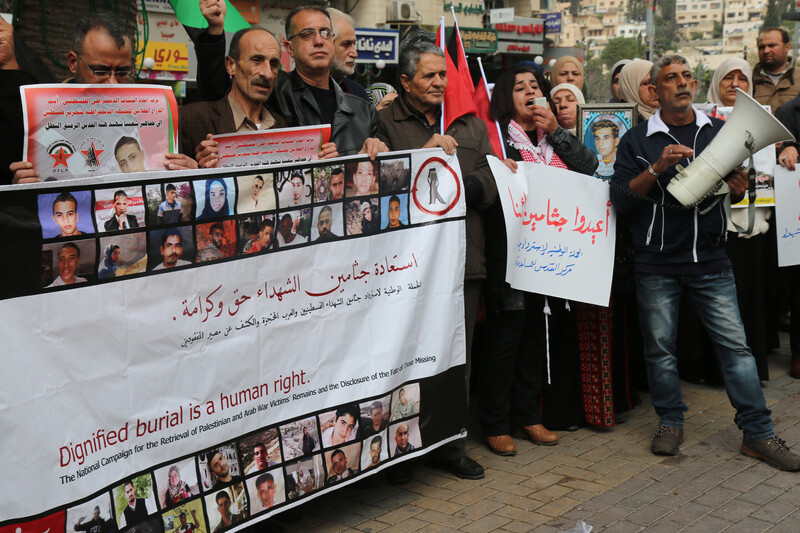
Palestinians in the West Bank city of Nablus protest Israel’s refusal to return bodies of Palestinians slain by its forces, 3 December.
ActiveStills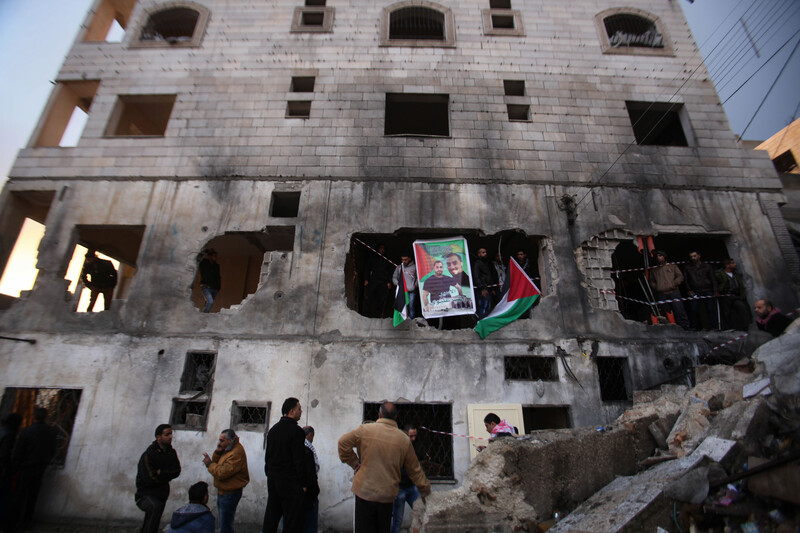
Palestinians look at the rubble of a house belonging to Ragheb Ahmad Muhammad Alawi, accused of masterminding the killing of a Jewish Israeli settler couple in the Itamar settlement on the eve of October, after it was destroyed by Israeli forces in the West Bank city of Nablus on 3 December.
APA images
Members of the Sub Laban family protest in front of the EU headquarters in Jerusalem to demand protection from Jewish settlers who are trying to take over their home in Jerusalem’s Old City, 3 December 2015.
APA images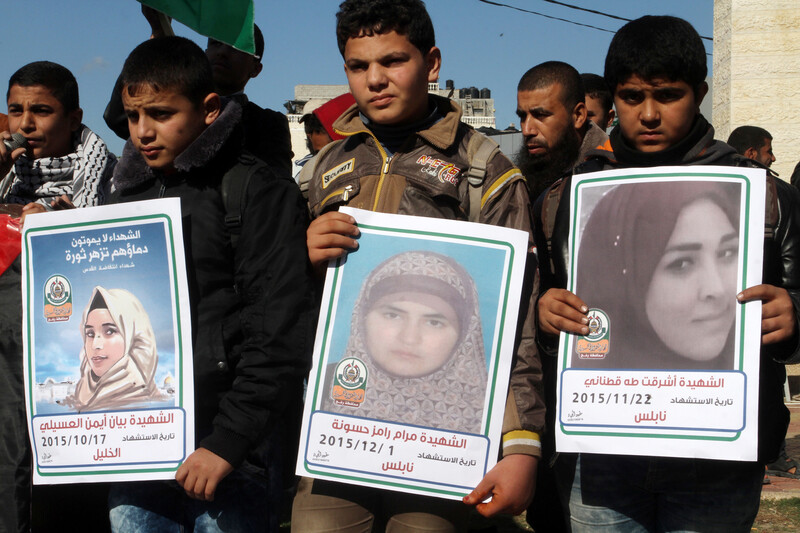
Palestinian youths in Rafah, southern Gaza Strip, carry photos of women and girls shot dead by Israeli forces during a protest to show solidarity with al-Aqsa mosque and Palestinians in the West Bank on 5 December.
APA images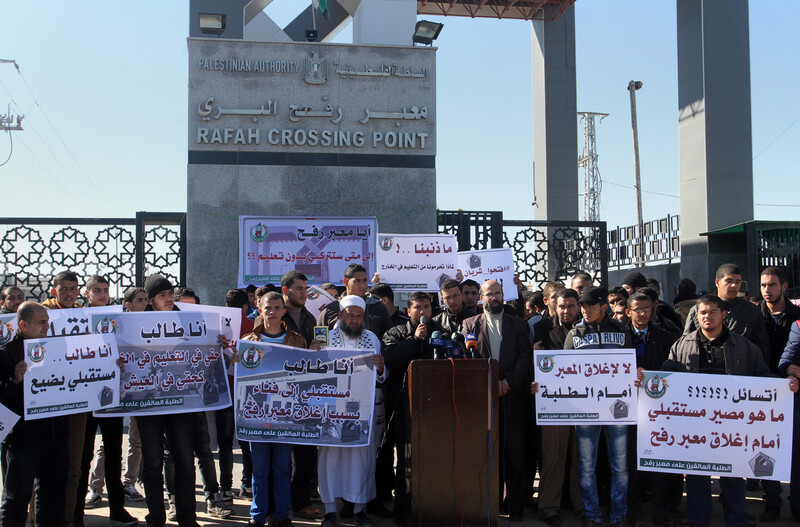
Palestinian students stranded in Gaza and unable to reach their studies abroad call on Egypt to open the Rafah crossing on 6 December.
APA images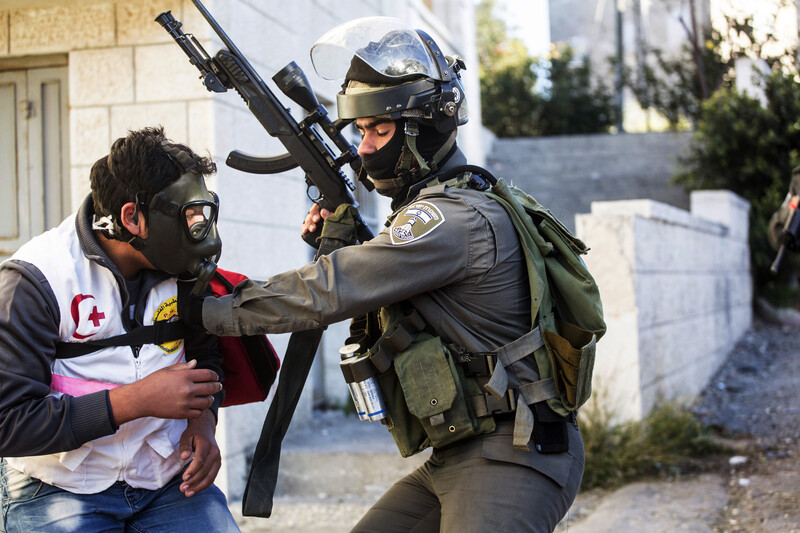
An Israeli soldier pushes a Palestinian medic during confrontations in Bethlehem, West Bank, on 8 December.
ActiveStills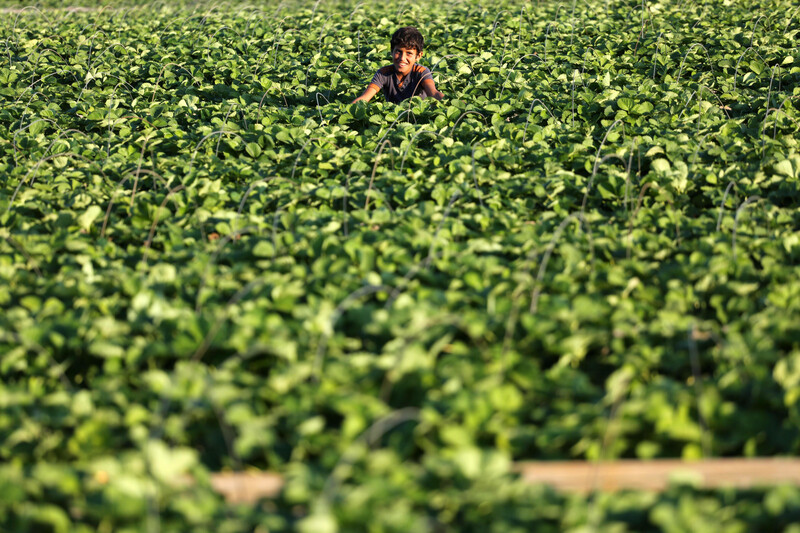
A Palestinian boy harvests strawberries in a field in Beit Lahia, northern Gaza Strip, on 10 December.
APA images
Fighters with the Qassam Brigades, the armed wing of Hamas, stand guard during a parade to mark the 28th anniversary of the Islamist movement’s founding in Jabaliya refugee camp, northern Gaza Strip, 11 December.
APA images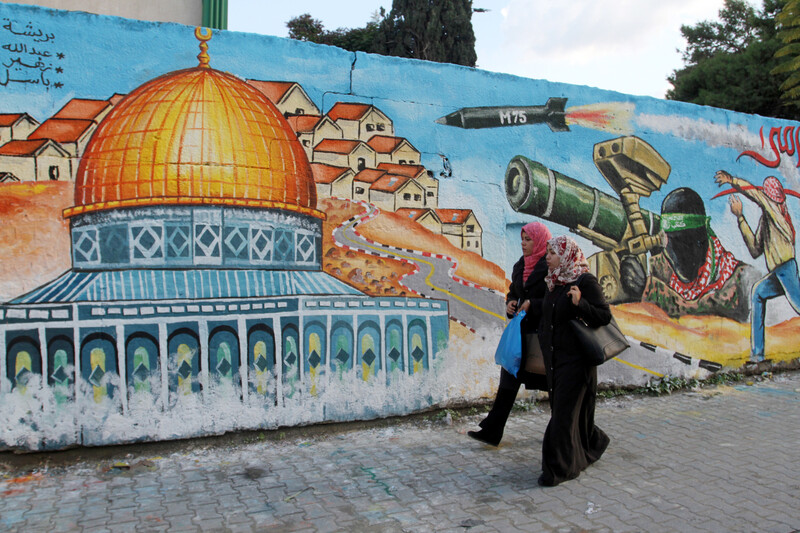
Palestinians walk past a mural during a rally marking the 28th anniversary of Hamas’ founding in Rafah, southern Gaza Strip, 14 December.
APA images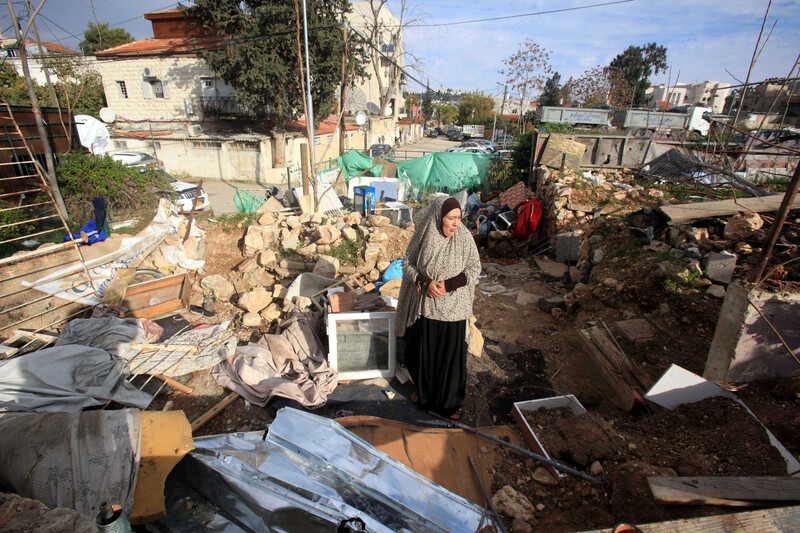
Palestinians inspect a home demolished by the Israeli military in the Sheikh Jarrah neighborhood of East Jerusalem on 16 December. Israel destroyed the home on the pretext that it was built without permits rarely issued to Palestinians in the city.
APA images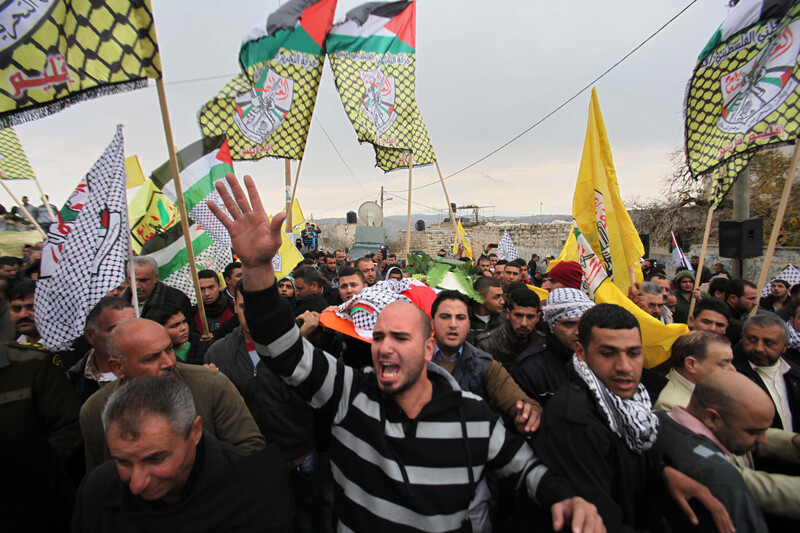
Palestinian mourners carry the body of Samah Abd al-Mumin Abdallah, 18, during her funeral in the West Bank city of Nablus on 17 December. The young woman died of wounds she sustained nearly two months prior when she was hit by a stray bullet fired by Israeli soldiers during an alleged stabbing attack at Huwwara checkpoint.
APA images
Palestinians in the West Bank city of Hebron take part in a mock funeral on 17 December to demand that Israel return the bodies of alleged attackers.
APA images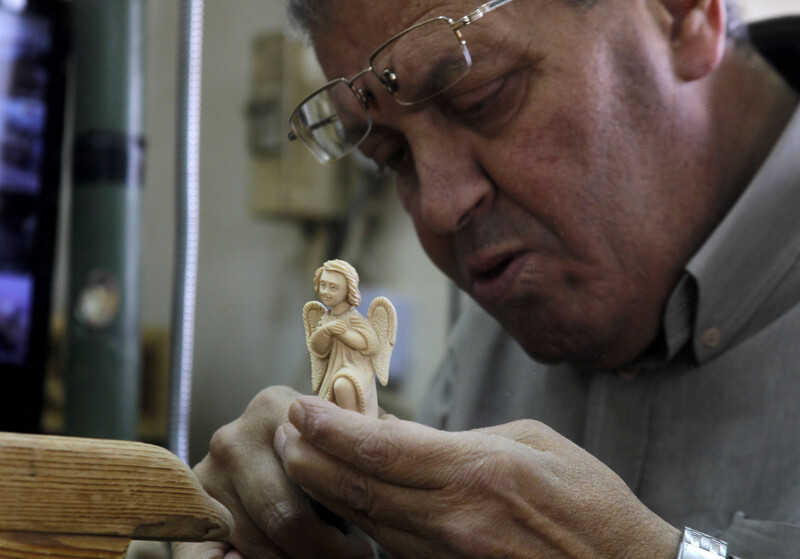
A Palestinian carpenter carves wooden figurines at a workshop in the West Bank town of Bethlehem on 17 December.
APA images
Palestinian worshippers attend Friday prayers in front of the Dome of the Rock at the al-Aqsa mosque compound in Jerusalem’s Old City on 18 December.
APA images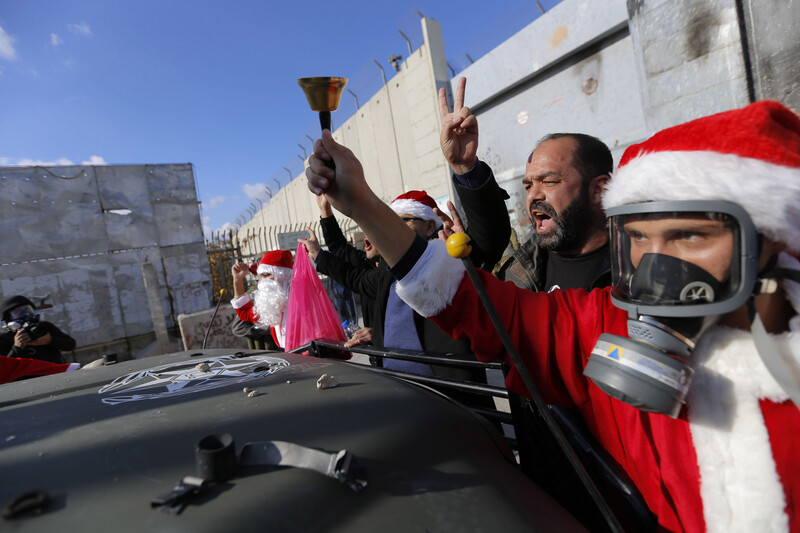
Palestinians stand in front of an Israeli military jeep during a protest against the occupation in the West Bank city of Bethlehem on 18 December.
ActiveStills
Palestinians take part in a protest outside of the Red Cross in Gaza City demanding the release of prisoners in Israeli jails on 21 December.
APA images
Israeli left-wing activists march during a protest against the incitement campaign against Breaking the Silence and other groups which expose Israeli human rights abuses, Tel Aviv, 19 December.
ActiveStills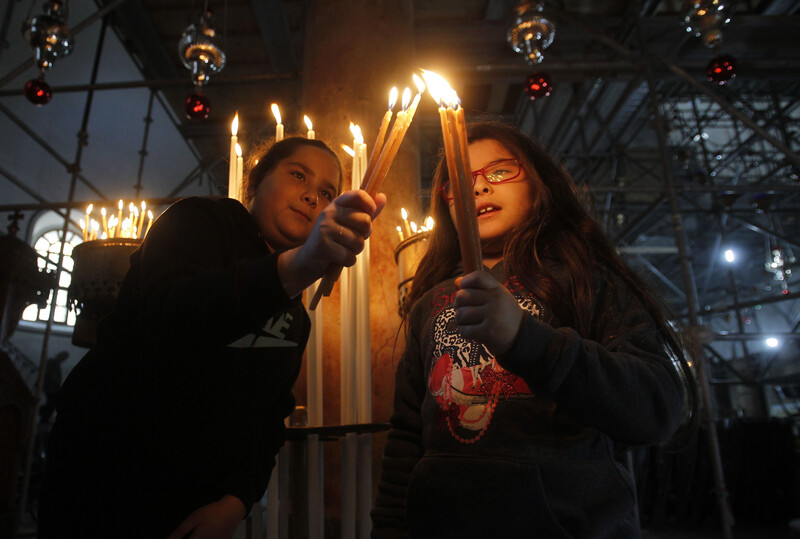
Children light candles at the Church of the Nativity, believed to be the birthplace of Jesus Christ, in the West Bank city of Bethlehem on 20 December.
APA images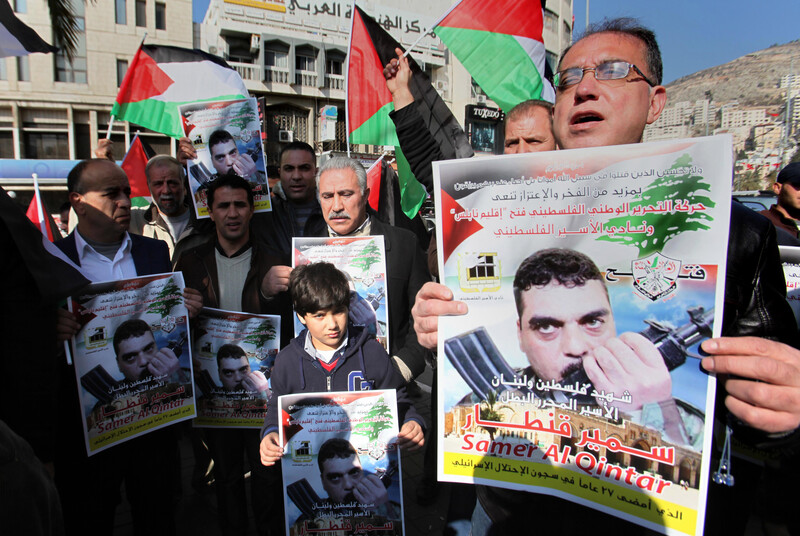
Palestinian demonstrators in the West Bank city of Nablus hold posters of Hizballah fighter Samir Kuntar days after he was killed in Syria, 21 December. Kuntar, from Lebanon, spent decades in Israeli prison for his role in the 1979 kidnapping and slaying of an Israeli family before his release in a prisoner exchange in 2008. Hizballah said that Israel assassinated Kuntar but the Free Syrian Army claimed responsibility for the attack.
APA images
A Palestinian man stands next to a house vandalized with Hebrew-language graffiti reading “revenge” and “hello from the prisoners of Zion” in the West Bank town of Beitillu on 22 December. Two tear gas canisters were also thrown into the home by suspected Jewish extremists, Israeli police said, but the family was not hurt.
APA images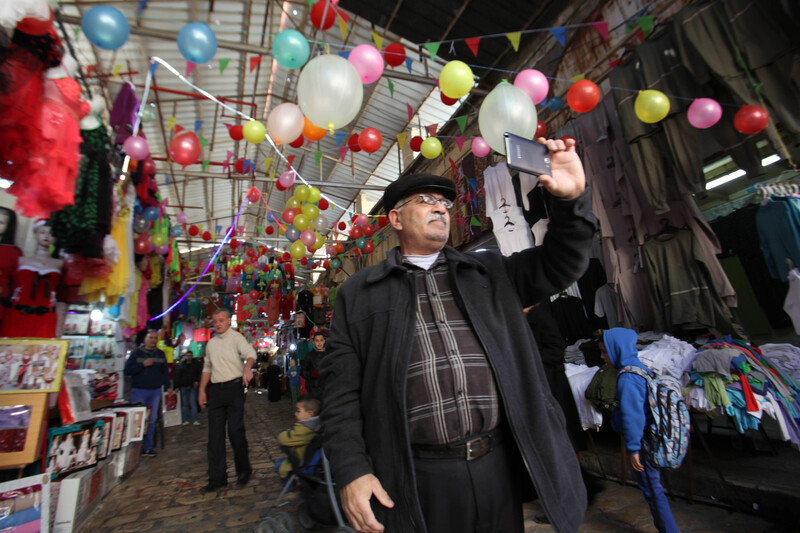
A Palestinian man takes a photo at a market in the West Bank city of Nablus decorated for the celebration of the birthday of the Prophet Muhammad on 23 December.
APA images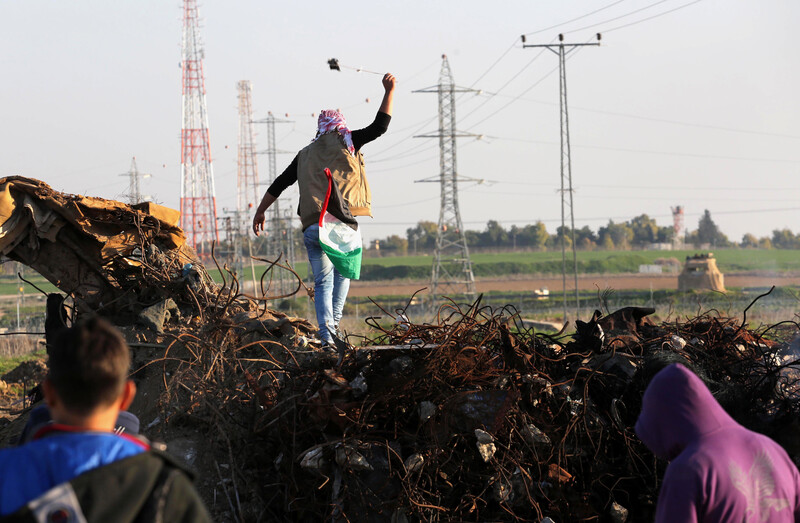
Palestinian protesters confront the army along the boundary with Israel on the eastern outskirts of Gaza City on 25 December. Two protesters in Gaza were fatally wounded by live fire that day.
APA images
Palestinians take part in a human chain around Jerusalem’s Old City, calling on Israel to return the bodies of alleged Palestinian attackers slain by soldiers and police, on 26 December. The demonstration was violently dispersed by Israeli police.
APA images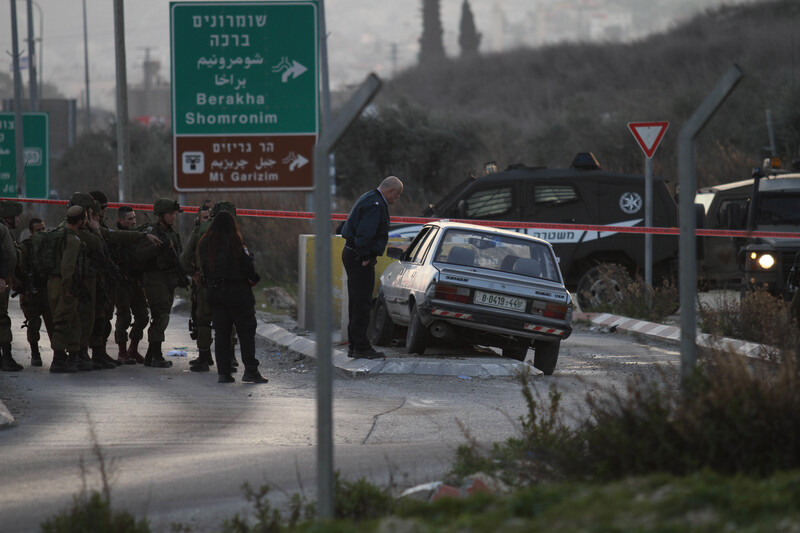
Israeli forces gather at Huwwara checkpoint near the West Bank city of Nablus after soldiers shot dead a Palestinian motorist on 26 December. The army said the driver, Maher Hussein al-Jabi, 45, had attempted to ram his car into soldiers but findings by the Palestinian Centre for Human Rights dispute that account and suggest he had not attempted any attack when he was slain.
APA images
Palestinians hold a demonstration in front of Egypt’s diplomatic mission in Gaza City to protest the killing of a Gaza man by Egyptian forces as he swam into its territorial waters, 27 December. Footage released by Al Jazeera showed 28-year-old Ishaq Hassan being shot dead without warning.
APA images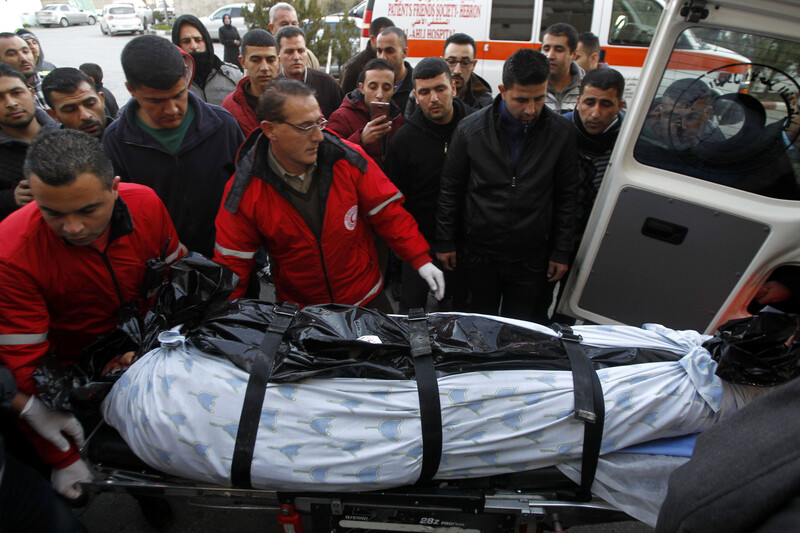
The body of 56-year-old Issa Hroub is transferred from an ambulance during his funeral in the West Bank city of Hebron on 27 December. Hroub’s body had been withheld by Israel since 11 December, when soldiers shot him in his car and left him to bleed to death, claiming he had attempted to run them over.
APA images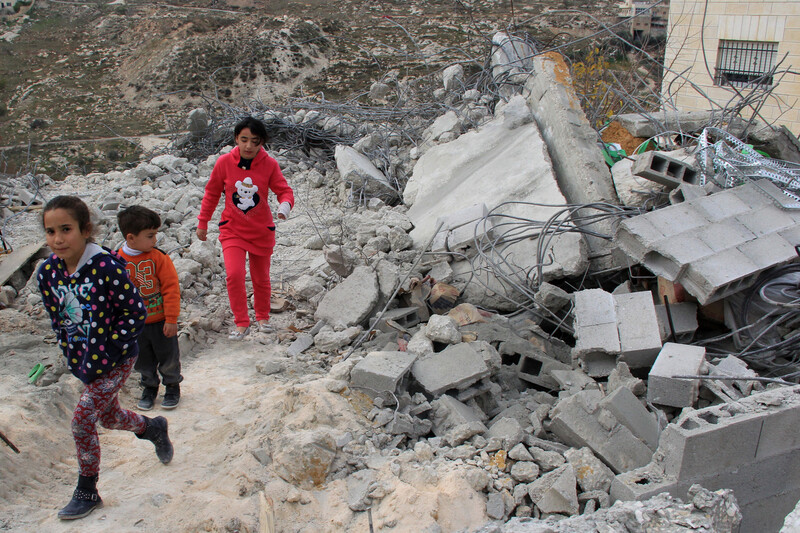
Palestinian children stand on the rubble of their home that was demolished by Israeli occupation authorities in Jerusalem on 29 December on the pretext that it was built without permits rarely issued to Palestinians in the city.
APA images
An Israeli military notice posted to a door declares the closure of the Ahrar Center for Prisoners Studies and Human Rights in the West Bank city of Nablus after it was raided overnight on 29 December. Soldiers confiscated all of the organization’s computers and electrical equipment as well as documents.
ActiveStills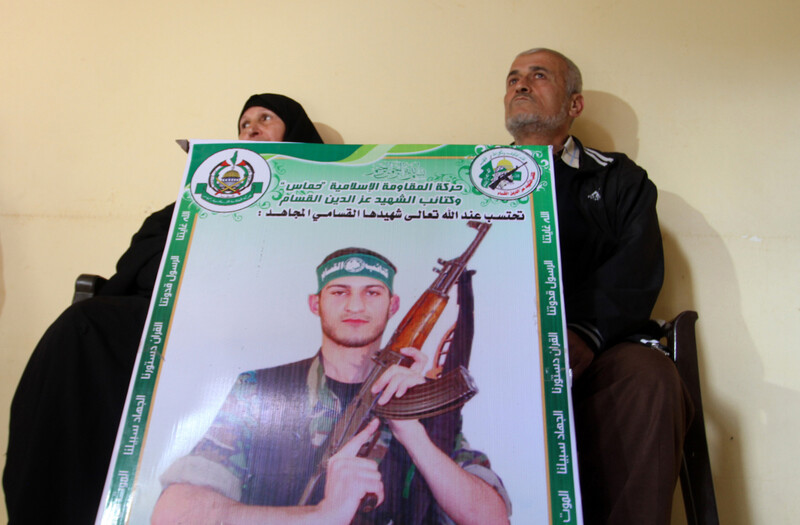
The parents of Muhammad Daoud hold a banner of their son in their home in Khan Younis, southern Gaza Strip, on 30 December. The Qassam Brigades, the armed wing of Hamas, announced that five of its fighters who guarded the captive Israeli soldier Gilad Shalit for five years before his release, including Daoud, had died. The announcement was made in a video profiling the secret unit to which the five men belonged and showing never before seen footage of some of them with Shalit.
APA images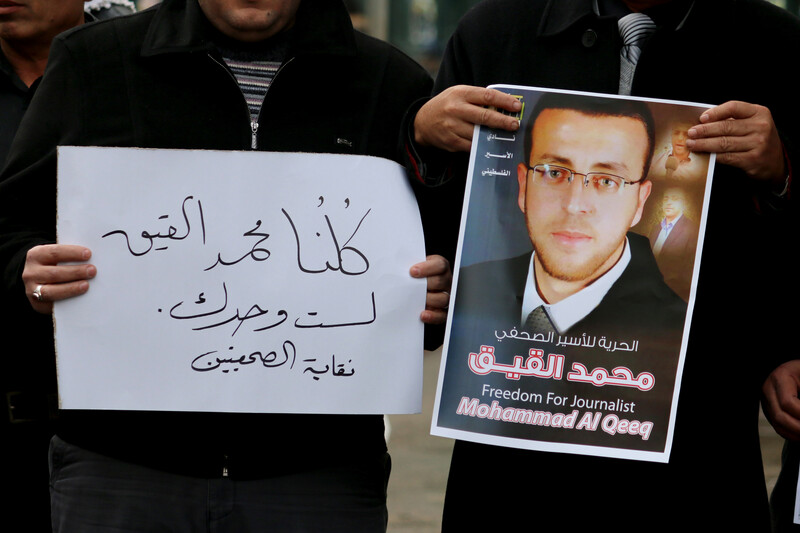
Palestinians in the northern West Bank city of Nablus demonstrate in solidarity with journalist Muhammad al-Qiq, 33, who went on lengthy hunger strike after Israeli forces arrested him at his home the previous month and detained him without charge or trial, 31 December. Israel claims that al-Qiq, a reporter who works for the Saudi news station Almajd, is a member of Hamas who was previously jailed several times due to his activities in the organization.
ActiveStills

